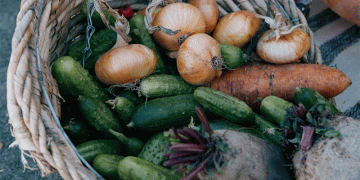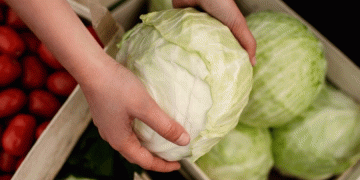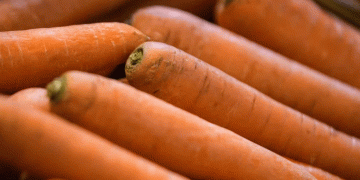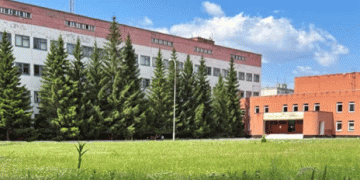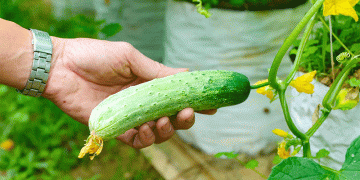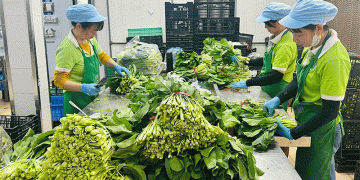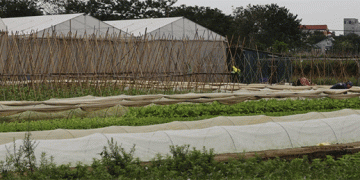Recent foodborne illness outbreaks and new estimates on foodborne disease illness from the Centre for Disease Control and Prevention or CDC could possibly have been the impetus that spurred the recent passage of the food safety bill S.510. As part of that legislation, FDA will be required to create new produce safety regulations for producers of the highest-risk fruits and vegetables. This heightened sense of urgency for safe food has food growers and processors reevaluating their options for testing food at the source or in the field.
EXISTING TESTING TECHNOLOGIES
Growers and processors historically have used one of three methods to test for bacteria: adenosine triphosphate (ATP) cleanliness monitoring systems, culture testing and polymerase chain reaction (PCR) testing.
Adenosine triphosphate cleanliness monitoring systems test for the molecule ATP, which is found in all organic materials. ATP assays measure the ATP from animal and vegetable cells as well as living or dead bacteria, yeast or mold. This assay can be used on non-organic surfaces to determine cleanliness and requires there be 10,000 to 100,000 bacteria present to produce enough ATP to result in a positive detection of bacteria.
A culture assay is a laboratory test that determines what bacteria or yeast may be present in a given sample. Culture assays requires that the sample be incubated for a set time, typically 24 to 48 hours, to give bacteria a chance to grow to determine its presence. This requires sending the sample to a laboratory.
PCR is an assay that uses DNA to test for various bacteria and pathogens. The process amplifies a piece of DNA generating thousands to millions of copies. It is a highly accurate and takes between 12 hours and 26 hours.
INHERENT PROBLEMS
The existing technologies have drawbacks that make them ineffective for food producer’s purposes and ineffective tests can result in food contamination, illness, loss of revenue and much more.
ATP assays test for the presence of the molecule ATP, which is present in all organic material. This means that a positive ATP test only confirms that organic matter is present – not necessarily bacteria. This assay is actually a test for cleanliness, or that a surface is clear of any live or dead organic material. Because it tests for organic material, it cannot be used on food as food is organic. Additionally, the ATP assay cannot detect biofilm, which is a sticky byproduct of organisms that can hide live bacteria. Another issue with ATP testing is to produce enough ATP to create a positive test, the bacteria would need to number at least 10,000 bacteria.
Culture assays in general are quite accurate, but the method requires that the bacteria be incubated for 24 hours to 48 hours to verify the presence of bacteria. This means the sample is sent to a laboratory for this incubation time and a trained technician reads the test. The need for lab work increases the cost to the end user and the added time increases the chances contaminated food will slip through the process.
PCR assays, while also highly accurate, require the producer to ship the sample to a lab where a trained technician uses expensive equipment to process the test. The test itself consists of several complicated steps, adding to the costs passed on to the food producer. PCR assays require an enrichment phase that takes between 8 hours and 20 hours, plus 1hour to 4 hours for the actual test. The added steps and the time increase costs and the chances food contamination will go unnoticed.
ENZYME TESTING
Microbiologists have been studying and using enzymes for detecting bacteria since the early 1950s. Many stopped using enzyme methods and switched to antigen/antibody or Nucleic Acid Amplification Testing (NAAT) technologies in the 1970s and 1980s. Since that time, however, continued enzyme research has led to the discovery of specific bacterial enzymes associated with many different microorganisms. This information has lead to the development of proprietary substrates that can identify and link to specific enzymes given off by specific bacteria. With this new information tests have been developed to utilize the proprietary substrates which when hydrolyzed by an enzyme produces a fluorescence that can either be read by a fluorometer or by adding a reagent to produce a reaction colormetric.
Other diagnostic systems must find the bacteria cell itself by growing the sample in cultures, or replicating DNA utilizing a PCR/NAAT system. These methods will take, in most cases, more than a day to obtain results from the time of sample collection and they require trained laboratory technicians and expensive equipment. Using an enzyme detection methodology, bacteria can be producing thousands of molecules of an enzyme, which increases the odds and time of being detected at a much faster rate than any other methods of detection.
BACTERIAL ENZYME DETECTION KITS
Using this methodology, bacterial enzyme detection kits, which come in either manual swab kits or digital handheld fluorometer kits, can be used in the field to test surfaces and foods for total organisms, gram negative bacteria (Enterobacteriaceae). The tests confirm the presence or absence of bacteria above normal background levels with results on the spot in 20 minutes. The tests are easy to perform, require no extra equipment and also detect bacteria hiding in biofilm. Accuracy is greater than 98 percent if more than 1,000 organisms are present per test strip when compared to traditional methods. The kits are designed to serve as a screening tool to look for “hot spots” that contain unacceptable levels of bacterial contamination. Because they are inexpensive, fast and easy to use, more frequent monitoring and testing can be performed.
BENEFITS
Enzyme bacteria detection assays have many benefits over standard culture, ATP and PCR assays including faster speed, ease of use, higher accuracy, lower cost and the ability to detect biofilm. Enzyme assays provide results in as little as 20 minutes from sample to result and the results are available in the field or on site as they do not require the samples to be sent to a laboratory. Culture or PCR assays utilize specialized equipment and trained technicians where as assays do not, making them an effective, low-cost screening tool for food growers and processors.
CONCLUSION
Current culture, ATP and PCR assays are expensive, slow and cumbersome. Using enzyme detection for identifying bacteria in the field provides an accurate, quick and inexpensive way to screen for dangerous levels of bacterial contamination. Having a low cost screening tool means users can test more often thereby greatly increasing the success rate of catching bacterial contamination before it finds its way to the consumer.














